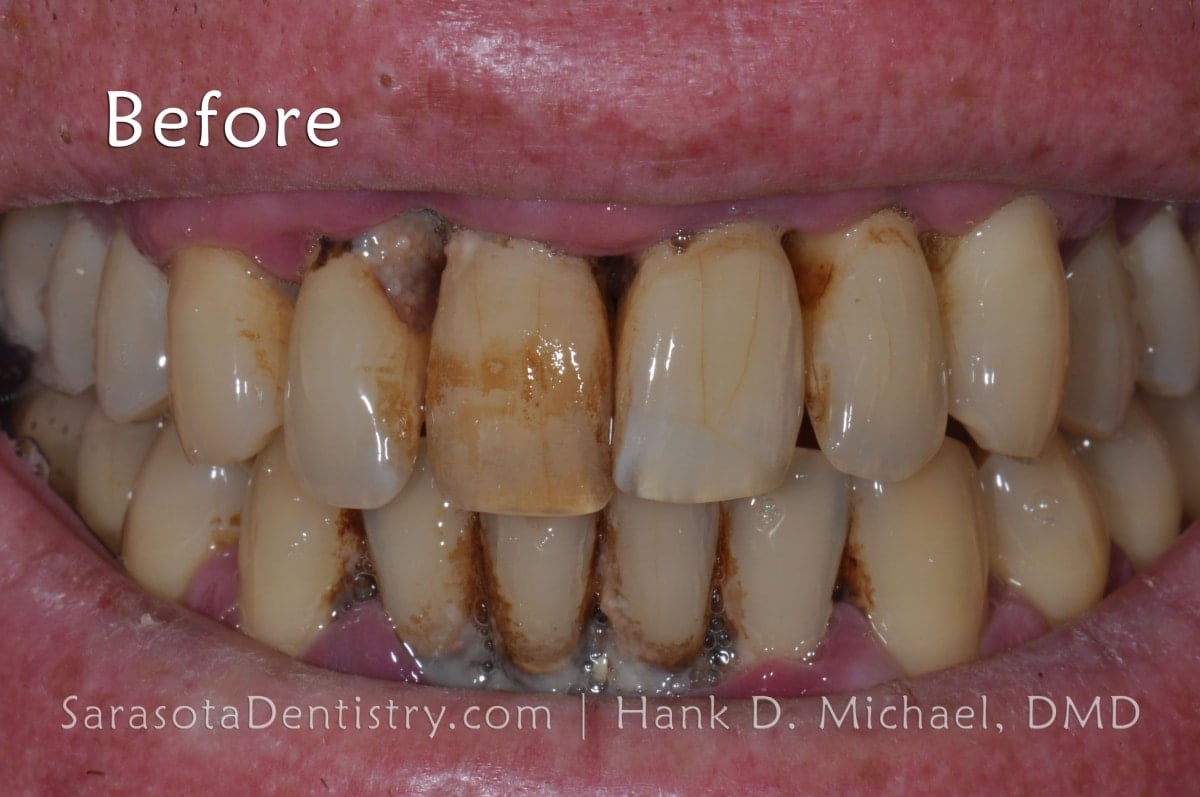Decoding Brown Stains on Teeth: Causes, Removal, and Prevention

Key points
- Foods and Drinks: Many popular foods and beverages contain intensely colored pigments called chromogens or acidic compounds called tannins that stick to tooth enamel. Over time, these can cause significant staining. Common culprits include coffee, tea, red wine, colas, dark berries, and sauces like soy or tomato sauce.
- Tobacco Use: Nicotine and tar from cigarettes, cigars, or chewing tobacco create stubborn yellow and brown stains that can become darker and harder to remove over time.
- Poor Oral Hygiene (Plaque and Tartar): When you don't brush and floss effectively, a sticky film of bacteria called plaque builds up. If not removed, plaque hardens into a rough, porous substance called tartar (or calculus). Tartar is typically yellow or brown and can only be removed by a dental professional.
- Chromogenic Bacteria: Your mouth contains a complex ecosystem of bacteria. Certain types, known as chromogenic bacteria, can produce dark pigments. While often associated with black stains, these bacteria can contribute to brown discoloration, especially along the gum line.
Noticing brown spots or stains on your teeth can be concerning, affecting both your confidence and your peace of mind. While these stains are often cosmetic, they can sometimes signal an underlying issue that needs attention. Understanding the cause is the first step toward restoring your bright, healthy smile.
This comprehensive guide, synthesizing information from leading health authorities and dental research, will help you identify the potential causes of brown stains, differentiate them from more serious issues like cavities, and explore safe and effective options for removal and prevention.
What Causes Brown Stains on Teeth?
Brown stains can appear as blotches, lines, or spots and can range from yellowish-brown to a very dark brown. They fall into two main categories: extrinsic (on the surface) and intrinsic (inside the tooth).
Extrinsic Stains: The Surface-Level Culprits
Extrinsic stains affect the outer layer of the tooth, called the enamel. These are the most common types of stains and are often caused by lifestyle and dietary factors.
- Foods and Drinks: Many popular foods and beverages contain intensely colored pigments called chromogens or acidic compounds called tannins that stick to tooth enamel. Over time, these can cause significant staining. Common culprits include coffee, tea, red wine, colas, dark berries, and sauces like soy or tomato sauce.
- Tobacco Use: Nicotine and tar from cigarettes, cigars, or chewing tobacco create stubborn yellow and brown stains that can become darker and harder to remove over time.
- Poor Oral Hygiene (Plaque and Tartar): When you don't brush and floss effectively, a sticky film of bacteria called plaque builds up. If not removed, plaque hardens into a rough, porous substance called tartar (or calculus). Tartar is typically yellow or brown and can only be removed by a dental professional.
- Chromogenic Bacteria: Your mouth contains a complex ecosystem of bacteria. Certain types, known as chromogenic bacteria, can produce dark pigments. While often associated with black stains, these bacteria can contribute to brown discoloration, especially along the gum line.
 Image Source: Sarasota Dentistry
Image Source: Sarasota Dentistry
Intrinsic Stains: Discoloration From Within
Intrinsic stains originate from within the tooth structure, making them more resistant to over-the-counter whitening products.
- Tooth Decay (Cavities): This is one of the most serious causes of brown spots. As bacteria produce acids that erode enamel, they can create a hole, or cavity. The decay process often appears as a brown or black spot on the tooth's surface.
- Fluorosis: While fluoride is beneficial for teeth, excessive intake during childhood when teeth are developing can cause a condition called fluorosis. This can range from faint white lines to more severe brown spots and pitting on the enamel.
- Medications: Certain antibiotics, like tetracycline and doxycycline, can cause intrinsic staining if taken by children whose teeth are still forming. Some mouthwashes containing chlorhexidine can also cause surface staining.
- Aging: Over time, the outer enamel layer naturally thins, revealing the yellowish layer of dentin underneath. This can make teeth appear darker or more yellow-brown.
- Trauma: An injury to a tooth can damage the nerve and blood vessels inside, causing the tooth to "die" and turn dark brown, gray, or black.
- Medical Conditions: Though less common, certain health issues can lead to tooth discoloration. Celiac disease, for example, can cause dental enamel defects that appear as white, yellow, or brown spots.
- Genetics: Your natural tooth color, enamel thickness, and susceptibility to staining can be inherited.
Is It a Benign Stain, Tartar, or a Cavity?
It can be difficult to tell the difference between a harmless stain and a more serious problem. While only a dentist can give you a definitive diagnosis, here are some visual clues:
- Benign Stain: Often appears as a uniform discoloration across the surface of multiple teeth, especially the front ones. The tooth texture feels smooth.
- Tartar: Looks like a hard, crusty deposit that is typically concentrated along the gum line and between the teeth. It cannot be brushed or flossed away.
- Cavity: Often starts as a small, concentrated brown or black spot. The area may feel soft or sticky to a dental instrument, and it can be accompanied by sensitivity to hot, cold, or sweet foods.
Important: If you notice a new brown spot, especially if it's accompanied by pain or sensitivity, schedule a visit with your dentist immediately.
How to Remove Brown Stains from Teeth
The best method for removing brown stains depends entirely on the cause.
At-Home and Over-the-Counter (OTC) Options
For mild, extrinsic stains, some at-home solutions may offer improvement.
- Excellent Oral Hygiene: Brushing twice a day with fluoride toothpaste and flossing daily is your first line of defense against plaque buildup and surface stains.
- Whitening Toothpastes: These products contain mild abrasives that can help scrub away surface stains but will not change the intrinsic color of your teeth.
- OTC Whitening Strips and Gels: These use low concentrations of peroxide to bleach surface stains. Look for products with the American Dental Association (ADA) Seal of Acceptance.
A Word of Caution on "Natural" Remedies
Home remedies like activated charcoal, lemon juice, and apple cider vinegar are often promoted online. However, dental professionals advise against them. These substances are highly abrasive or acidic and can permanently damage your tooth enamel, leading to increased sensitivity and making your teeth more susceptible to future staining.
Professional Dental Treatments
For effective, safe, and lasting results, professional treatments are the gold standard.
- Professional Dental Cleaning: This is the most effective way to remove stains caused by plaque and tartar. A dental hygienist uses special tools to scale away tartar and then polishes the teeth to remove surface stains.
- Professional Teeth Whitening: For deeper extrinsic stains, in-office bleaching or custom-fitted take-home trays from your dentist use higher-concentration, professional-grade bleaching agents for dramatic and reliable results.
- Dental Bonding: A tooth-colored composite resin can be applied to the tooth's surface to cover up severe or intrinsic stains that don't respond to whitening.
- Porcelain Veneers: These are thin, custom-made ceramic shells that are bonded to the front of the teeth to completely mask deep discoloration and create a uniform, white appearance.
- Dental Crowns: If a tooth is both discolored and significantly weakened by decay or trauma, a crown (or cap) can be placed over the entire tooth to restore its strength and appearance.
How to Prevent Brown Stains on Your Teeth
Practicing preventive care is the easiest way to maintain a bright, stain-free smile.
- Practice Good Oral Hygiene: Brush for two minutes, twice a day, and floss daily.
- Get Regular Dental Cleanings: Visit your dentist every six months (or as recommended) for check-ups and professional cleanings to remove plaque and tartar before they cause significant staining.
- Modify Your Diet: Limit your consumption of coffee, tea, red wine, and other staining foods and drinks.
- Use a Straw: When drinking dark beverages, a straw can help minimize their contact with your front teeth.
- Rinse with Water: After consuming staining foods or drinks, swish your mouth with water to help wash away staining compounds.
- Quit Tobacco: Eliminating tobacco use is one of the best things you can do for your oral health and the appearance of your teeth.
When to See a Dentist
You should always consult a dentist to determine the cause of brown stains and discuss the safest treatment options. It is especially important to make an appointment if:
- The stains appeared suddenly.
- You have tooth pain or sensitivity.
- You see a visible pit or hole in your tooth.
- The stains are accompanied by bleeding or swollen gums.
- The stains don't improve after a few weeks of diligent oral hygiene.
A professional evaluation will ensure you're not just masking a more serious problem like a cavity and will help you choose the most effective path back to a healthy, confident smile.
References
- Cleveland Clinic. (n.d.). Tooth Discoloration.
- Huizen, J. (2020). What to do about brown spots on your teeth. Medical News Today.
- Whelan, C. (2017). Brown Spots on Teeth: Causes, Treatment, and Prevention. Healthline.
- Kumar, M., Madi, M., Vineetha, R. et al. (2025). Chromogenic bacterial staining of teeth: a scoping review. BMC Oral Health.

About the author
Benjamin Carter, MD, is a board-certified otolaryngologist specializing in head and neck surgery, with an expertise in treating throat cancer. He is an associate professor and the residency program director at a medical school in North Carolina.